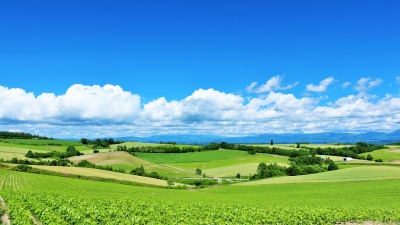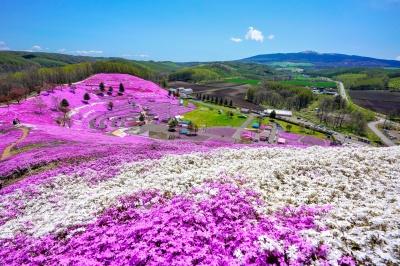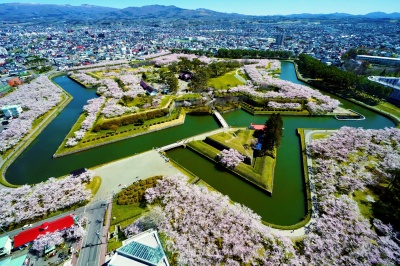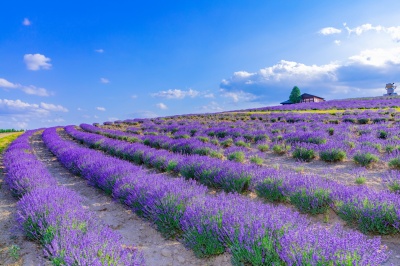Protecting Otaru’s Past

Otaru has blossomed into one of the most popular tourist destinations in Hokkaido. One of the primary reasons is its beautifully preserved historic downtown center. Headlined by the quaint canal that flows along the old brick warehouses, here you will find a cityscape unlike any other in Japan. The reason for the existence of these warehouses, as well as the impressive former bank buildings further inside the downtown core, comes from Otaru’s unique history as part of the development of Hokkaido. Indeed, Otaru was once one of Japan’s richest cities, and dwarfed neighboring Sapporo in terms of both wealth and population for most of the prewar era.
- * Please note that the text shown on this page includes machine translations.
Profile
Owner of Nishin Goten Otaru Kihinkan Former Aoyama Villa
Mr. Michio Sato
He fell in love with the splendor and magnificence of the former Aoyama Villa, a villa left by the former Aoyama family of herring fishermen, and purchased this building to preserve Otaru City's cultural assets. After a year of restoration, it was opened to the public in April 1989.
What Herring Gave Otaru
This history of wealth comes primarily from the herring trade. When the newly established Meiji government decided to pour resources into developing Hokkaido in the latter half of the 1800s, Otaru saw a massive influx in population spurred by eager would-be fisherman that crowded the city during its so-called “herring gold rush”. Indeed, at the onset of the Meiji Era in the 1960s, the yearly herring yield was about 30,000 Tons. By 1897, that number had reached close to 100 million Tons – which still represents a record yield in Japanese history. Similarly, the city’s population grew from about 1,000 to 60,000 inhabitants over this time. As herring was primarily ground up to use as fertilizer, it played a massive role in Japan’s modernization of its agricultural sector. This was also the reason for the high value of the small fish.
This influx of wealth was not only responsible for the iconic warehouses and bank buildings seen throughout Otaru, but also the construction of impressive villas on the city’s outskirts. These were built by the families that made their fortune off the herring trade. One of the most impressive of these villas is the Old Aoyama Villa, which is simply a gorgeous ode to the city’s past, built by one of the last great herring families. Its current owner and protector is Sato Michio, who acquired the property and opened it to the public as the museum Otaru Kihinkan in the late 1980s. We sat down for an interview with him to talk about the unique collection of artifacts present on-site, as well as his love for preserving this part of Hokkaido’s history.
Preserving Hokkaido's history
“Getting my hands on the property was quite difficult at the time. Not only were my funds limited, but there were also several hotel chains that wanted to convert the space.” In the end, his passion for history convinced the previous owners, a family from Asahikawa who had originally purchased the property from the Aoyama family. “I wanted to protect the property, and the amazing collection of Japanese artifacts that are housed here. It really is a piece not just of Hokkaido’s history, but of Japan’s as a whole.”
The Aoyama clan amassed massive wealth and used it to build not only a classic Japanese-style villa, but also amass a treasure trove of Japanese art and antiques. “This spot is a symbol of Japan’s heritage, and thus a fabulous place for those who appreciate Japanese history, art, and antiques.” The Japanese government seems to agree, with the property now being registered as a national cultural property. But it has not always been easy to maintain such a historic property.
“You cannot really be in it for the money, especially if you want to preserve everything in its original state” says Sato. Indeed, the maintenance has proved to be a constant challenge. “This is a unique property built using a specific type of Japanese tree, as well as glass that is simply not available anymore. So far, I have been able to procure the last commercially available material to be able to renovate in an authentic way, but I do not know how much longer this will be possible.” For his most recent maintenance, he had to deal with and fly in a company from Kyoto, the only other place where there are still local contractors that are able to work on such an old building.
In the middle of a pandemic
Another issue has been the inconsistencies in the number of visitors. “When we first opened, we were immensely popular. Then, numbers started to decline before large cruise ships picked up the villa as one of the destinations to visit when docked at Otaru harbor. Now, we are dealing with the effects of the COVID-19 induced pandemic.” Sato says he has been operating at a loss for the entirety of the pandemic, but still maintains a full staff as a show of solidarity in hard times. He has also seen other encouraging signs in recent months. “While foreign guests are unable to visit, I am happy to see that local youth are starting to take an interest in the area’s history. I was shocked but extremely pleased when an entire elementary school class wanted to visit, apparently at the request of the students.”
Share your passion project
Finally, Sato is also concerned about finding a suitable successor to take over and keep the old Aoyama Villa operational in its current form. “I have poured my heart and soul into this building. This is a project of passion, and I hope to find somebody who shares this passion.” Naturally, he has garnered some interest in the property, but most are looking at it from a purely commercial standpoint. “I don’t want somebody who will simply convert it into a hotel to make easy money, for instance.”
Despite all these challenges, Sato presses on. “Sometimes I think the building speaks to me. It tells me not to stop in my quest to preserve it, not to simply sell to the highest bidder.” While this sounds odd at first, there is definitely something uniquely spiritual about the old building, lending credence to Sato’s words. If you wish to visit, the Old Aoyama Villa is located on the hill of Shukutsu on the north side of the city. “Nowhere else will you find such a large collection of historical pieces in such a comparatively small space.” Furthermore, visitors can also enjoy fresh seafood and other local, seasonal ingredients at the in-house restaurant, which overlooks the magnificent garden. “It is especially marvelous in summer, when the many flowers are in bloom.” For Sato’s passion alone, we cannot wait to visit once more.
Ranking of popular articles
- Hokkaido Summer Travel Guide

- https://www.visit-hokkaido.jp/en/feature/travelguide_summer
- Hokkaido Spring Travel Guide

- https://www.visit-hokkaido.jp/en/feature/travelguide_spring
- Here are the recommended cherry blossom viewing spots!

- https://www.visit-hokkaido.jp/en/feature/sakura
- Best Places to View Flowers in Hokkaido vol. 1

- https://www.visit-hokkaido.jp/en/feature/best-places-to-view-flowers-in-hokkaido-vol-1
- When is the best time to see lavender? Recommended Lavender Spots in Hokkaido

- https://www.visit-hokkaido.jp/en/feature/lavender




